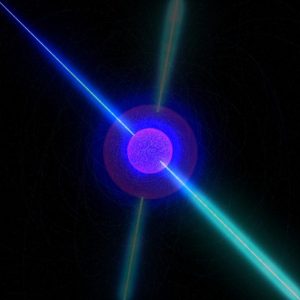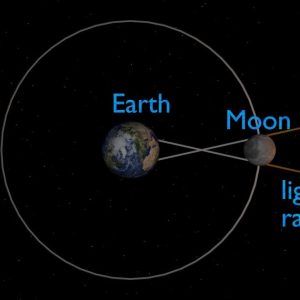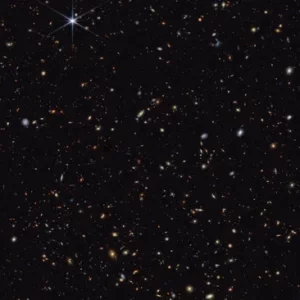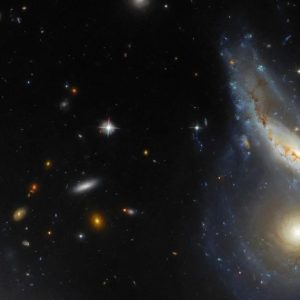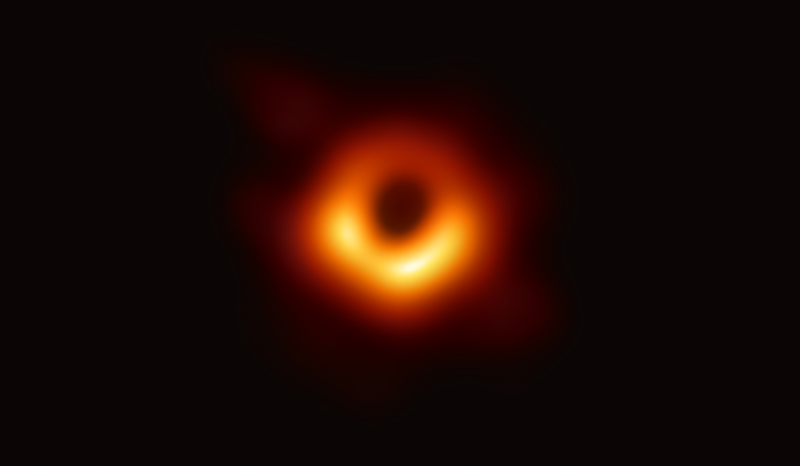Dark matter is a bit of an enigma for scientists. It’s this concept that’s been around for ages, but nobody’s been able to pin down exactly what it is. It’s like a big mystery that’s been boggling minds in the scientific community for decades. The collision of two neutron stars,...
Troy Bagshaw
Is there actually another world out there somewhere? NASA’s James Webb Space Telescope has just made a groundbreaking discovery, as astronomers have detected Ethanol and other icy ingredients in potentially habitable worlds near two young protostars, IRAS 2A and IRAS 23385. Using Webb’s Mid-Infrared Instrument (MIRI), an international team of...
The universe has presented a puzzling challenge known as the ‘Hubble Tension’ as scientists strive to unravel its mysteries. This challenge has arisen from the gap between the observed rate of the universe’s expansion and what we expect based on our current understanding. Despite meticulous observations and analyses by scientists...
It’s still a mystery how animals behave during a total solar eclipse. With the next event set for April 8th, scientists are preparing to observe and study it in an attempt to demystify. In a recent study led by Adam Hartstone-Rose from North Carolina State University, researchers observed interesting behaviors...
The Pentagon’s All-domain Anomaly Resolution Office (AARO) is adding efforts to improve the military’s ability to understand and react to unidentified aerial phenomena (UAP), commonly known as UFOs. In a press briefing on Saturday, Tim Phillips, the acting head of AARO, introduced the Gremlin System, an advanced surveillance capability designed...
Dead galaxy! Do big things end up the same way? – Yes, they do! Astronomers have recently discovered the earliest ‘dead’ galaxy. This early galaxy, identified when the universe was just 700 million years old, ceased star formation about over 13 billion years ago, challenging prevailing cosmic evolution models. Astronomers...
The results of the study provide revolutionary insights into the factors that support the formation of planets and the variety of planetary systems taking shape. According to the researchers, certain disks show spiral patterns caused by planets orbiting within them, whereas others exhibit rings and empty spaces created as planets develop.
Once this universe was a dark space, simple and void. Over time, it developed with telescopic technology into the complex network of galaxies and stars. Now, the James Webb Space Telescope (JWST) is reshaping our understanding of the universe by expanding our knowledge and uncovering the secrets hidden within the...
The total solar eclipse on April 8, 2024, is drawing near for astronomy enthusiasts across the Americas. This Sun-Moon-Earth event, with the moon aligning perfectly to block the sun’s disk, creating a breathtaking moment known as totality, will indeed be spectacular. “The sky will darken as if it were dawn...
The Hubble Space Telescope has captured another captivating image of Arp 122, a peculiar galaxy undergoing a monstrous merger. This cosmic collision involves two galaxies – NGC 6040, a tilted, warped spiral, and LEDA 59642, a round, face-on spiral, at a distance of approximately 570 million light-years from Earth. Galactic...
NASA’s James Webb Space Telescope recently identified a second supernova within a distant galaxy, MACS J0138.0-2155, refueling the debate surrounding the universe’s expansion rate. This discovery, observed in November 2023, utilizes the gravitational lensing effect, bending light due to intense gravity, leading to multiple images of the galaxy. Astronomers stumbled...
A new study has suggested that the regular bursts of high-energy gamma-rays, striking Earth every 76 minutes, originate from a mysterious rotating gas blob near the heart of the Milky Way‘s supermassive central black hole. This discovery by astrophysicists from the National Autonomous University of Mexico sheds light on a...
Spider pulsars are the dead stars wreaking havoc on their neighbors. They strip companion stars through energetic particle winds, and Chandra’s recent findings, set to be published in the December issue of the Monthly Notices of the Royal Astronomical Society, reveal their destructive nature on an extreme scale. As described...
The James Webb Space Telescope (JWST) has detected water vapor and methane in the atmosphere of an exoplanet named WASP-80 b. Located nearly 163 light-years away, the gas giant exoplanet, which orbits a K-type star, happens to be similar to our own gas giant Jupiter, both in aesthetics and components....
In 2019, a collaborative effort among the world’s astronomers successfully captured a historic image of the black hole in Messier 87. The moment was the most significant for humanity in terms of space exploration. Further exploration of the black hole’s image has lately defied conventional understanding, contrary to its notorious...
